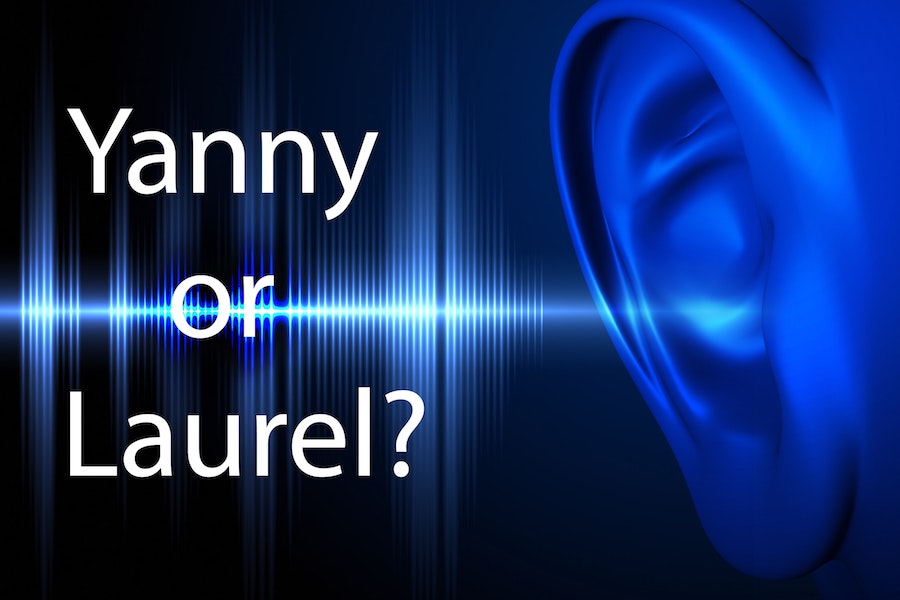Yanny or laurel? Experts give their view on the puzzling audio clip
Yanny or laurel? It’s a question that has divided the internet ever since the clip of the sound made its way to Twitter.
Believed to have originated on Reddit and posted by YouTuber Cloe Feldman on Twitter, the computer-generated voice has become the most divisive topic since #TheDress debate in 2015.
What do you hear?! Yanny or Laurel pic.twitter.com/jvHhCbMc8I
— Cloe Feldman (@CloeCouture) May 15, 2018
But why is it that some of us are dead certain it’s yanny while others are ready to put their reputations on the line for laurel?
Experts give the low-down on possible explanations.
For starters, we are working with ambiguous sound
First and foremost, our brain is trying to make sense of what we are hearing, and in this case, the sound is from a highly synthesised audio clip.
The brain is left to interpret what we are hearing and make its own guess.
As Dr Gustav Kuhn, a reader in psychology at Goldsmiths, University of London, explains: “Our ears provide us with vast amounts of ambiguous sensory information, which our brain needs to disambiguate before it can make sense of what you are hearing.
“For example, as you hear your name being called out at the counter, your brain needs to segregate the auditory information associated with the sound of your name from all of the other noise.
“Many of these processes rely on informed guesswork. At times this guesswork can be wrong, which can lead to illusions.
“We all make different assumptions about the world which means we can all interpret the same sound in different ways. This is why we ultimately all hear the same sound differently.
“It’s an illusion that truly demonstrates that hearing is believing.”
We are tuning into different frequencies
I just spoke to an acoustic scientist about Yanny vs Laurel. He said it’s a nice example of how environmental cues shape perception.
If you are tuned to more high-frequency sounds, or are primed by preceding softer vowels, you choose Yanny, if you are a liar you choose Laurel.
— Tom Whipple (@whippletom) May 16, 2018
Dr Elliot Freeman, a senior lecturer in psychology at City, University of London, says it is well known that we each have our own individual frequencies to which we are sensitive, which some refer to as “ear print”.
He says: “Probably quite accidentally, this lo-fi synthesised voice contains sounds consistent with several different phonemes, like for example, ‘ya’ and ‘lo’, each occupying slightly different frequency bands.
“Like a radio, our brains can selectively tune into them, once we know what to listen out for.
“So even if both people are listening to the same sound, they might disagree because they just have different ear prints.”
And the device you are listening to might play a role, although Valerie Hazan, professor of speech, hearing and phonetic sciences at UCL, believes that’s only partly true.
She says: “The reason that the illusion may vary according to how it is played can be because some speakers or headphones can boost the low or high frequencies favouring one or the other perception.”
But she adds that perception can change, even in the same device.
Prof Hazan says: “My own experience is that this morning I could hear 110% yanny and now, on same iPad and also via Twitter, I am hearing 110% laurel so the explanation is not as simple as a change in loudspeaker or headphones, although this could have an influence.”
Ultimately, she says, our auditory systems are flexible and individuals can vary in terms of which acoustic patterns they tend to latch on to.
And because we were given a choice between yanny and laurel, our brain automatically narrowed it down to those two options.
Prof Hazan says: “It is also the case that you are priming people to hear one word or another by telling them what the options are so that will also push them to perceive things they may not have without prompting.”
So chances are, you may have heard a completely different sound or word, had those two options not been available.
The Press Association
Latest posts by The Press Association (see all)
- 5 surprising things you can clean in the washing machine - January 9, 2025
- Prince William posted a heartfelt birthday message to ‘most incredible wife and mother’ - January 9, 2025
- Birthday wishes for Catherine from royal family as the Princess of Wales turns 43 - January 9, 2025
- Maple Cinnamon Granola - January 8, 2025
- 8 things your feet can tell you about your health - January 8, 2025





















